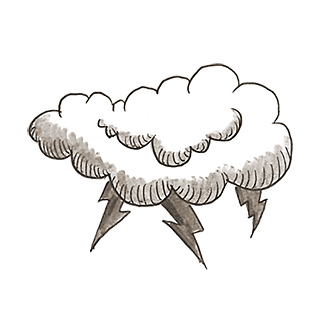
Related Questions
- Can sound be converted to useful energy?
- Why can’t magnetism be used as a source of energy?
- What happens to electricity when nothing is plugged into an outlet?
- How many wind turbines would it take to power all of New York City?
- What’s the difference between AC and DC?
- How does a battery work?
- What is a short circuit?
- Can we calculate the efficiency of a natural photosynthesis process?
- How do birds sit on high-voltage power lines without getting electrocuted?
- Is it possible to collect energy from foot traffic?
Which is more likely to happen first: solar panels on every home, or giant solar power plants?
Neither type of installation has a long track record, but big solar plants are taking the lead…
By Leda Zimmerman“The ideal might be if each family could use its rooftop to generate power,” says Gang Chen, Carl Richard Soderberg Professor of Power Engineering. Even though homemade energy could be simpler and cheaper than paying to transport energy from somewhere else, he adds, giant solar plants are moving forward faster right now because they’re easier to operate and maintain.
Home-based solar is expensive — $10,000 to $40,000. These systems generally rely on silicon-based photovoltaic panels, which convert sunlight into electricity, and they connect to their local electrical grids. During the day they return surplus electricity to the local utility for retail credit, but by night, these houses depend on the grid to maintain a steady power supply. All of this would change, Chen says, if we had cost-effective devices to store daytime-generated energy in our homes.
By contrast, there are existing solar plants that produce enough energy to power small cities. While some use giant photovoltaic arrays, other facilities function on a different principle: solar thermal power. This technology depends on vast numbers of collectors that track the sun, focus its energy with mirrors and utilize the resulting heat to drive steam turbines. The plants can in principle store this heat to produce electricity around the clock. Imagine “a big pot of soup,” says Chen, which “takes a long time to cool down.” A solar-thermal facility requires enormous amounts of space — imagine 1,300 adjacent football fields — in dry, sunny places. The electricity then has to move, sometimes over great distances, to power-hungry cities.
Chen believes widespread deployment of either residential solar or solar power plants mainly depends on reducing costs. At his Department of Energy-funded Solid-State Solar-Thermal Energy Conversion Center, Chen is working on a twist to photovoltaics: using semiconductor materials, he is building a thermoelectric device that converts heat from the sun into electricity through the material’s response to changes in temperature.
This technology will take a while to evolve, says Chen. Anyone impatient to use the sun’s power might try a simpler application, one that’s common outside the U.S.: solar water heating. “I take solar hot water showers when I visit my parents in China,” says Chen.
Posted: March 16, 2010